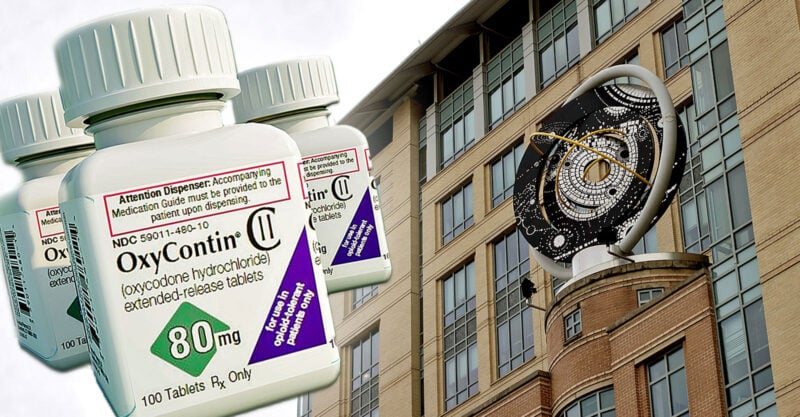by Michael Nevradakis, Ph.D., Childrens Health Defense:

As the opioid crisis in the U.S. grew, the National Academies of Sciences, Engineering, and Medicine, an advisory group that helped shape the federal government’s response to the crisis, accepted millions of dollars in donations from the Sackler family — owners of Purdue Pharma, the producers of OxyContin.
TRUTH LIVES on at https://sgtreport.tv/
As the opioid crisis in the U.S. grew, the National Academies of Sciences, Engineering, and Medicine, an advisory group that helped shape the federal government’s response to the crisis, accepted millions of dollars in donations from the Sackler family — owners of Purdue Pharma, the producers of OxyContin.
The donations occurred despite ongoing legal battles — and a number of settlements — involving Purdue Pharma in recent years, and as other public health entities, including the World Health Organization (WHO), severed ties to the drugmaker, The New York Times reported.
The new revelations come as questions emerge about the lack of transparency regarding how money from several opioid-related settlements has been used by state governments, and the federal government’s lack of oversight in connection to this issue.
According to data from the Centers for Disease Control and Prevention (CDC), more than 564,000 Americans died as a result of opioid overdoses between 1999 and 2020. The opioid epidemic costs the U.S. economy approximately $78.5 billion each year, according to the CDC.
Strong ties between the National Academies and the Sacklers
Several members of the Sackler family, including Dr. Raymond Sackler and his wife, Beverly Sackler, the couple’s foundation, and Dame Jillian Sackler and her husband Arthur, contributed about $19 million to the National Academies since 2000, according to the Times.
The National Academies’ treasurer report for 2021 stated that these funds were invested and had grown to more than $31 million.
The donations, however, appeared to remain under the radar for members of the National Academies — and the general public — until recently.
According to the Times, the Sackler donations emerged as “an internal issue for the advisory group in 2019, when members of the governing council were briefed about the money” and were reportedly “outraged.”
After internal meetings, the National Academies “quietly removed the Sackler name” from conferences and awards the family had sponsored.
Also in 2019, an article in The BMJ stated that the National Academies had “not disclosed that one of its presidents, and members of a panel it convened to advise on prescribing opioids, had recent links to the drug industry.”
Potential conflicts of interest between Purdue Pharma and public health organizations are not limited to the National Academies. The WHO, for instance, was accused of such a conflict of interest and as a result, in 2019, retracted two opioid policy reports.
However, the Times reported that, unlike the WHO, “the National Academies has not conducted a public review to determine if the Sackler donations influenced its policymaking, despite issuing two major reports that influenced national opioid policy.”
One of those reports, issued in 2011, continues to be used by federal public health agencies as the basis for opioid policy decisions — even though, according to the Times, the report is “now largely discredited.”
According to the Times, the report “described chronic pain that limited function and cost the nation billions of dollars in lost salary and wages.” Later estimates from the CDC, “defined chronic pain by different categories of severity, saying the condition affects 7% to 21% of Americans.”
“Regulatory, legal, educational and cultural barriers inhibit the medically appropriate use of opioid analgesics,” the report argued.
The report claimed that approximately 100 million Americans suffered from chronic pain, “an estimate that proved to be highly inflated,” the Times stated.
However, this report helped influence aggressive opioid sales campaigns on the part of drugmakers and influenced the approval of “at least one highly potent opioid” by the U.S. Food and Drug Administration (FDA).
The 2011 report was issued even as the White House stated that the U.S. was facing an opioid addiction crisis.
In the years preceding the publication of the report, Purdue Pharma lobbied for legislation — which passed in 2010 — that would recognize pain as a significant public health problem. Purdue also called for the National Academies to issue similar recognition. Meetings between Purdue Pharma lobbyists and members of the academies followed.
Read More @ ChildrensHealthDefense.org



